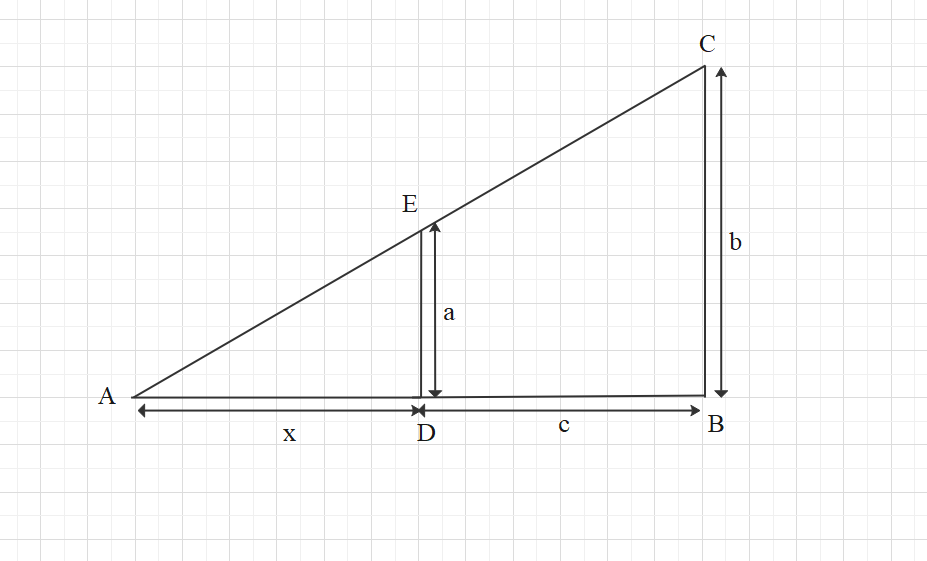
A vertical wall of height running from south to north has a height. A policeman of height b > a is standing in front of the wall at a distance c from it on the eastern side. What should be the maximum distance of a crawling thief from the wall so that the thief can hide from the view of the policeman if the thief is on the other side of the wall in the west of the policeman?
a)
b)
c)
d)
Answer
490.5k+ views
Hint: Let us assume that the distance of a crawling thief from wall is x in the west direction. So, we gathered two triangles. Now, by using the similarity of triangles, find the value of x.
Complete step by step answer:

We have:
Height of wall: DE = a
Height of policeman: BC = b
Distance of policeman from wall: BC = c
Now, we have two triangles as:
In
Since,
Therefore,
So,
Therefore, we can say that:
So, we have:
So, by solving the above equation, we get:
So, the correct answer is “Option D”.
Note:
Two triangles are said to be similar if
a) Their corresponding angles are equal, and
b) Their corresponding sides are proportional.
Complete step by step answer:

We have:
Height of wall: DE = a
Height of policeman: BC = b
Distance of policeman from wall: BC = c
Now, we have two triangles as:
In
Since,
Therefore,
So,
Therefore, we can say that:
So, we have:
So, by solving the above equation, we get:
So, the correct answer is “Option D”.
Note:
Two triangles are said to be similar if
a) Their corresponding angles are equal, and
b) Their corresponding sides are proportional.
Recently Updated Pages
Express the following as a fraction and simplify a class 7 maths CBSE

The length and width of a rectangle are in ratio of class 7 maths CBSE

The ratio of the income to the expenditure of a family class 7 maths CBSE

How do you write 025 million in scientific notatio class 7 maths CBSE

How do you convert 295 meters per second to kilometers class 7 maths CBSE

Write the following in Roman numerals 25819 class 7 maths CBSE

Trending doubts
State and prove Bernoullis theorem class 11 physics CBSE

What are Quantum numbers Explain the quantum number class 11 chemistry CBSE

Write the differences between monocot plants and dicot class 11 biology CBSE

Who built the Grand Trunk Road AChandragupta Maurya class 11 social science CBSE

1 ton equals to A 100 kg B 1000 kg C 10 kg D 10000 class 11 physics CBSE

State the laws of reflection of light




